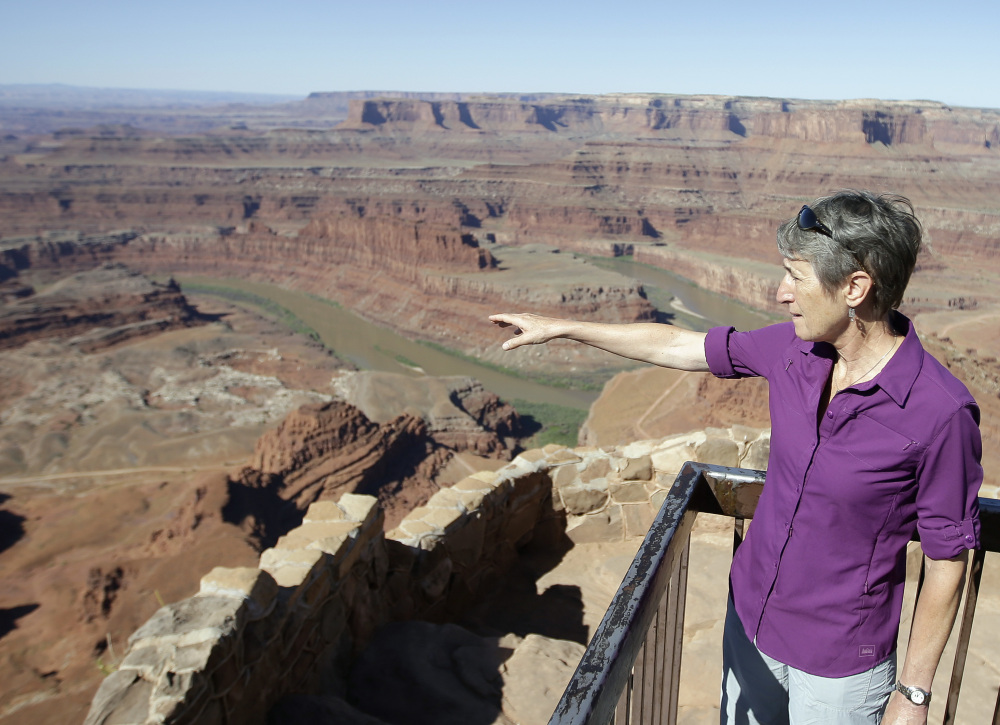BLANDING, Utah — Laminated sheets of paper held in place by rocks rest inside ancient cliff dwellings nestled underneath a spectacular red rock overhang in southeastern Utah.
“Don’t erase the traces of America’s past,” the signs read. “Please do not enter interior rooms.”
The weathered signs and a similar warning at the trailhead are the only protections in place for these easily accessible ruins along a canyon hiking path.
The cliff dwellings are part of an estimated 100,000 archaeological sites within a 1.9 million-acre area that a coalition of American Indian tribes wants President Obama to designate a national monument to ensure protections for lands considered sacred.
U.S. Interior Secretary Sally Jewell is visiting the area this week to meet with proponents and opponents – the latest indication the Obama administration is giving serious consideration to the “Bears Ears” monument proposal.
The issue has become the latest battleground in the debate over public lands in the West.
Utah’s Republican leaders, many rural residents and a few Native Americans fiercely oppose a proposal they believe would become another layer of unnecessary federal control and close the area for development and recreation.
To supporters, the makeshift Bureau of Land Management signs in the cliff dwellings illustrate the problem – vital remnants of tribal history aren’t being properly protected from looting and vandalism.
“We don’t want to forget about our ancestors,” said Malcolm Lehi, a Ute Mountain Tribal commissioner. “Through them, we speak. That’s the whole concept of protecting and healing this land. They are still here among us as the wind blows.”
Tribal members visit the Bears Ears area – named for a set of rock formations – to perform ceremonies, collect herbs and wood for medicinal and spiritual purposes and do healing rituals, Lehi said.
Tucked between existing national parks and the Navajo Nation, the proposed monument features stunning vistas at every turn, with a mix of cliffs, plateaus, towering rock formations, rivers and canyons across wide expanses covered by sagebrush and juniper trees.
Send questions/comments to the editors.



Comments are no longer available on this story